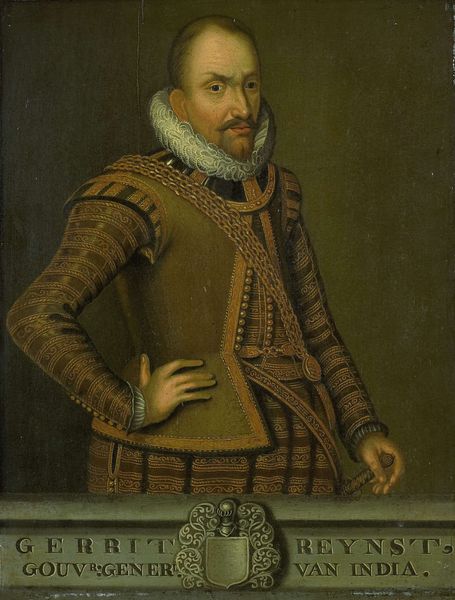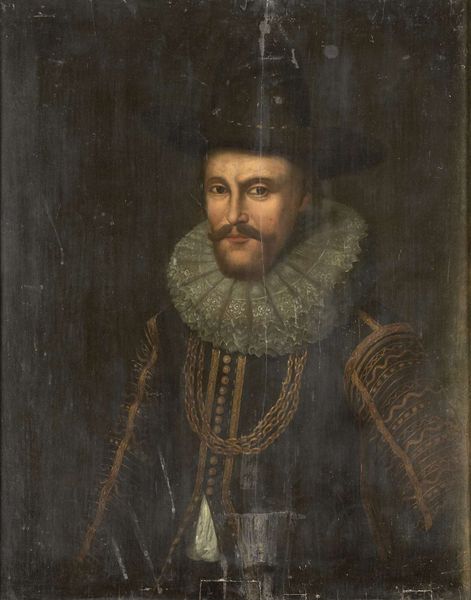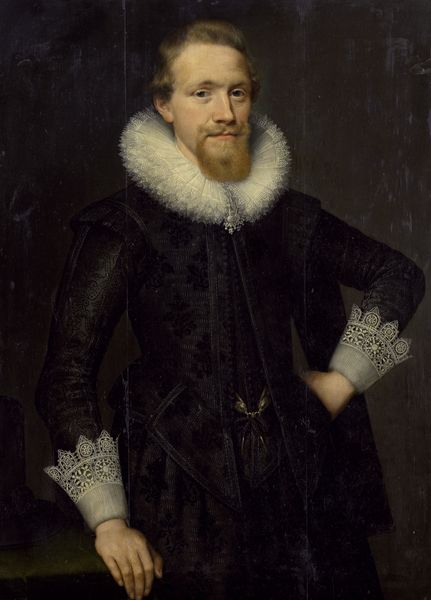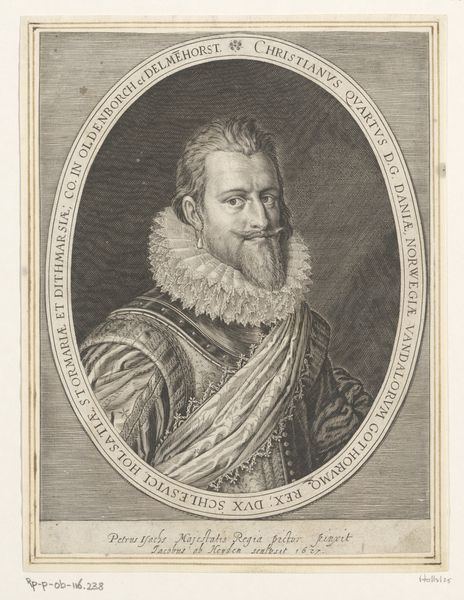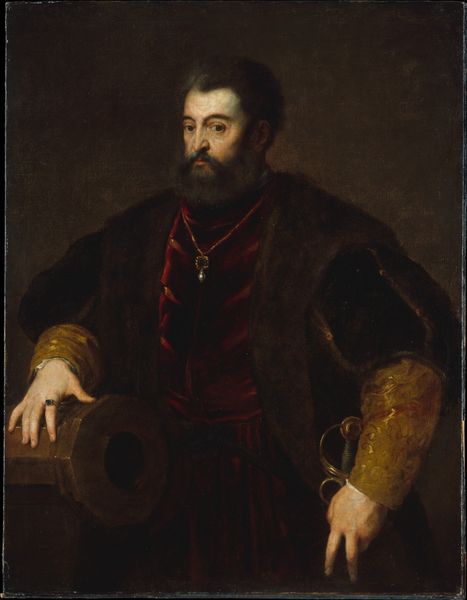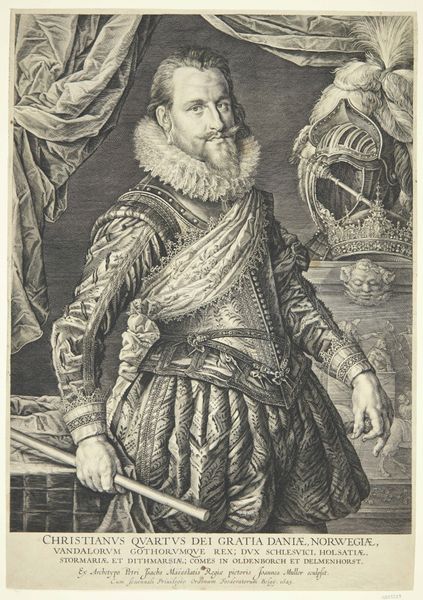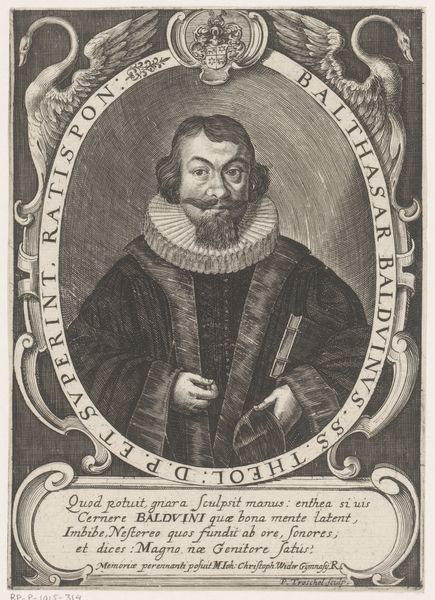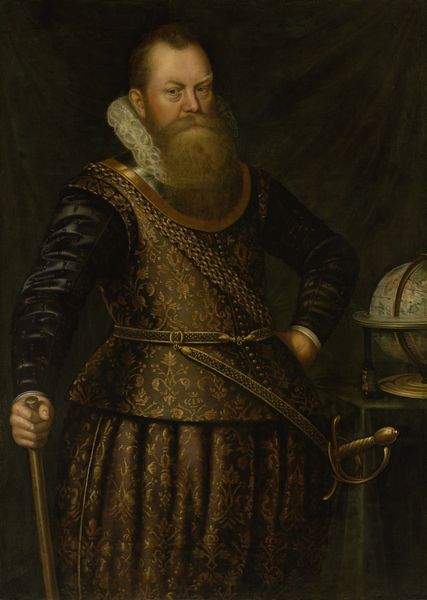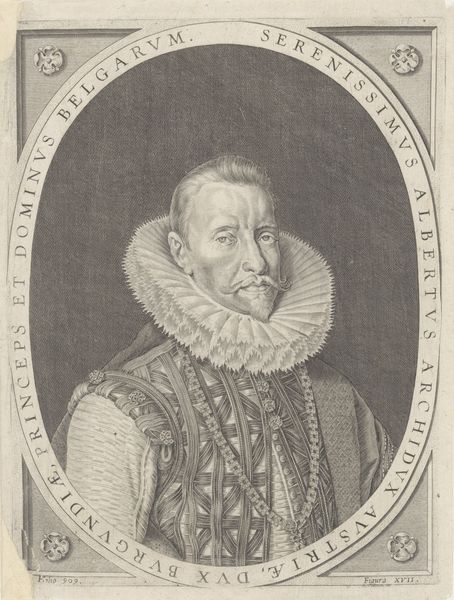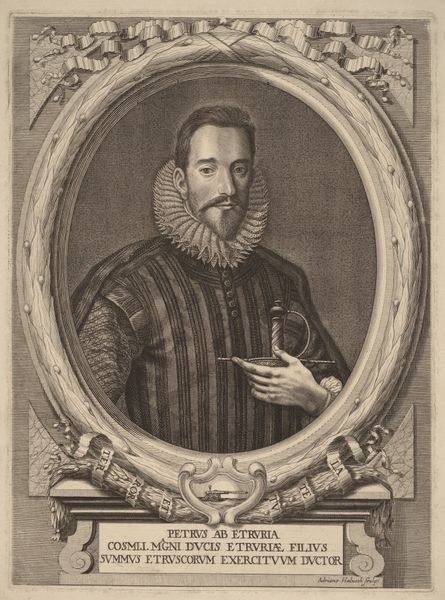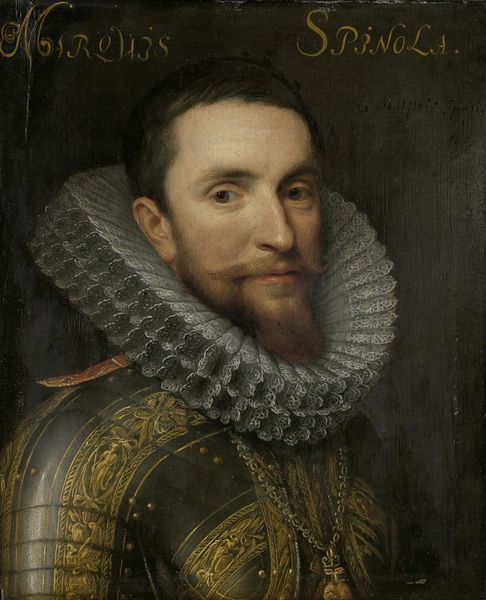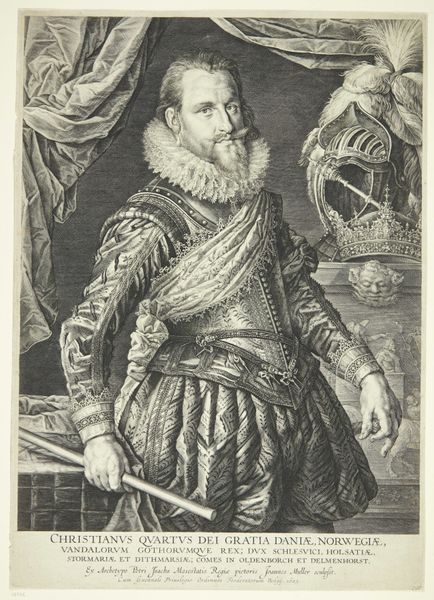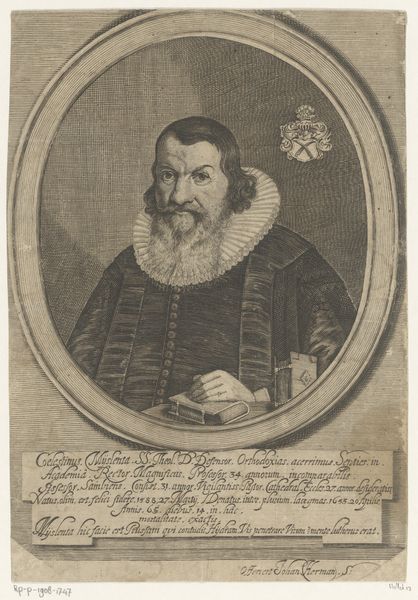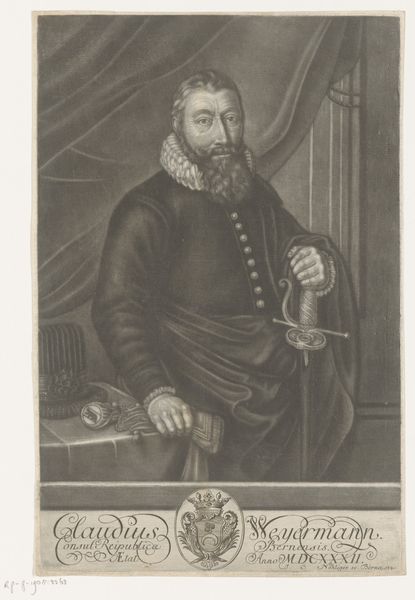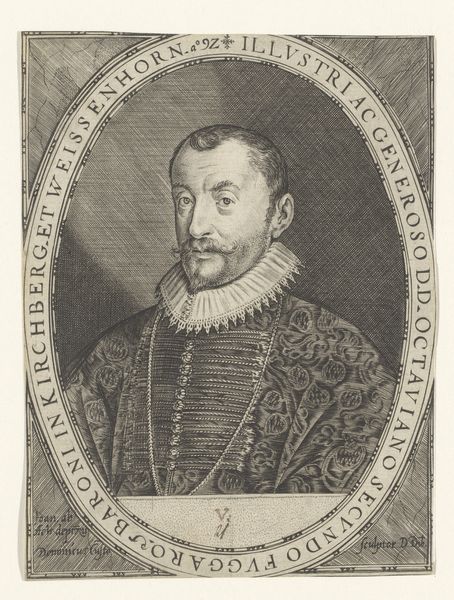
painting, oil-paint
#
portrait
#
baroque
#
painting
#
oil-paint
#
genre-painting
#
history-painting
#
academic-art
Dimensions: support height 95.5 cm, support width 84.4 cm, outer size depth 6.5 cm
Copyright: Rijks Museum: Open Domain
Editor: Here we have an oil painting from around 1610-1620, "Portrait of Eberhardt Hanekrodt," by an anonymous artist. He looks rather self-assured, maybe a little stern. The details in his clothing are pretty amazing. How do you read this portrait? Curator: The portrait of Hanekrodt is more than just an image of a man. It’s a performance of status, meticulously constructed. Note the lavish fabrics, the prominent sword—these weren't just aesthetic choices. These were direct visual signifiers of power and social standing in a deeply hierarchical society. How do we consider Hanekrodt's place within that societal structure? Editor: He definitely looks like someone of importance. I guess I hadn't thought about the clothing as a status symbol, but that makes total sense. The lace collar looks pretty expensive! Curator: Exactly. The ruff, while fashionable, restricted movement, suggesting a life of leisure. Moreover, let’s consider what this portrait *omits*. Where are the indicators of labour, of hardship? How does its idealized representation erase the experiences of those who lacked such privileges? Editor: That's a good point. It only shows one side of the story. Curator: Precisely! This portrait, like many from this period, reinforces existing power structures by presenting an aspirational, yet fundamentally unequal, vision of society. What kind of questions does that bring up for you? Editor: It makes me wonder about the power dynamics between the artist and the sitter. And it makes me think about who got to be represented, and who was left out. Curator: Absolutely. Art becomes a tool in solidifying a social structure. Considering art like this reveals a great deal about the socio-political landscape of the 17th century. Editor: This gives me so much to consider. I definitely see it differently now. Curator: And hopefully encourages you to look critically at whose stories are being told in art, and just as importantly, whose are not.
Comments
No comments
Be the first to comment and join the conversation on the ultimate creative platform.
